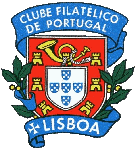 |
| Stamps |
 |
| Souvenir sheet |
 |
| First Day Cover with stamps |
 |
| First Day Cover with souvenir sheet |
2013 marks the five hundred years of the direct
relationship of cooperation and friendship between Portugal and China. Our aim
is to highlight the longevity of this relationship between the Portuguese
people and Chinese people, who despite being geographically situated in
opposite sides of the globe and having natural civilizational differences, were
able to share common interests and develop platforms for a stable and lasting
relationship.
Afonso de Albuquerque was viceroy of India in 1509,
having finally been recognized by D. Francisco de Almeida the royal appointment
of the previous year.
He soon turns his attention to the distribution source
of spices from the Moluccas, the city of Malacca, his base since 1511.
As a nephew of his, Jorge de Albuquerque, was Governor
of Malacca, they continued the trade travels to the East. On one of these trips
aboard a ‘Junco’, Jorge Álvares arrived on the Island of Tamao (Lintin) which
was about three miles from the Chinese mainland coast, leaving there a
testimony of his passage (Padrão), thus becoming in 1513 the first European to
trade in China, arriving by sea.
In the sixteenth century a community of Portuguese
descents began to develop there, and together with the Chinese people they made
Macau a fundamental and permanent hub of the friendly relations between East
and West. The relations between Portugal and China, besides being the oldest
with a permanent contact between Europe and China, take pride in having
significantly contributed to mutual understanding and sharing of knowledge. The
Portuguese became part of the maritime mercantile networks in the Indian Ocean
and China Sea, giving them continuity and an innovative link to the Atlantic
Ocean.
Portugal was also a pioneer in spreading the fondness
for Chinese elements in Europe (later known as Chinoiserie), and in the
American and African continents. The influence of Chinese civilization and
culture in the West has naturally assumed different forms and rhythms. In the
past, it expressed itself in different art forms, including architecture and
interior and exterior design, in fashion, but also in gastronomy.
In the 21st century, relations between Portugal and
China take on a special role, People's Republic of China declaring their
strategic partnership, resulting in greater intensity of trade and
reinforcement of cultural initiatives.
It is particularly worth pointing out in 2013: the
20th anniversary of the Macao Basic Law (an initiative by the Government of the
People's Republic of China, and Portugal), as well as the 10 years of
establishment of the Forum for Economic and Trade Cooperation between China and
the Portuguese-speaking countries (Macao Forum).
Technical Details
Date of Issue: 08 May 2013
Values: stamps of 0,36€ and 0,80€.
Special sheet with one stamp of 3,00€
Stamps:
0,36€ Bússola artesanal tradicional chinesa/chinese
traditional handcraft compass,
foto © Shi Guangde-Xinhua Press/Corbis;
0,80€ «Carta do Extremo Oriente» (pormenor),
de Diogo Homem, inserida no Atlas Universal, datada
de
1558/Map of Southern Asia and the Spice Islands
(detail),
by Diogo Homem. Image taken from Queen Mary Atlas,
1558.
© British Library Board;
Souvenir sheet:
Stamp
Garrafa, China, dinastia Ming, período de Jiajing
(1522-66), datada de 1552, col. Museu do Caramulo;
Background
Map of Southern Asia and the Spice Islands (detail),
by Diogo Homem.
Image taken from Queen Mary Atlas, 1558.
© British Library Board
Acknowledgments: Almirante Cavaleiro Ferreira, Biblioteca
Nacional de Portugal, British Library Board, Museu do Caramulo.
Designer: Folk Design
Photos:
Printer: Cartor, France
Process: Offset
Size: 30,6 x 40 mm
Size special sheet: 95 x 125 mm
Perforation: Cross of Christ 13 x 13
Paper: FSC 110 g./m2
Watermark:
Sheet: with 50 stamps




























.png)




































